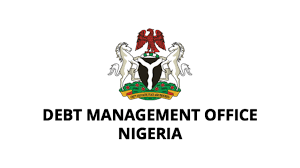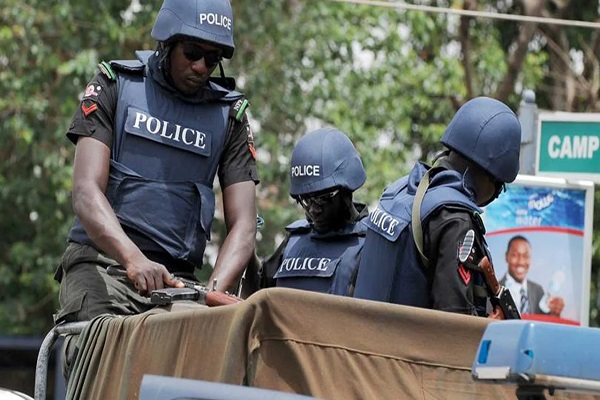At least 10 Nigerian states increased their domestic debt by a combined ₦417.7 billion year-on-year, despite benefiting from significantly higher revenue allocations from the Federation Account Allocation Committee (FAAC), a review of official data by The PUNCH has revealed.
An analysis of Debt Management Office (DMO) quarterly reports shows that Rivers, Enugu, Niger, Taraba, Bauchi, Benue, Gombe, Edo, Kwara, and Nasarawa States collectively raised their domestic debt stock from ₦884.9 billion in Q1 2024 to ₦1.3 trillion in Q1 2025—representing a 47.2% surge.
This increase raises serious questions about fiscal prudence, especially in a year when states saw revenue inflows rise due to elevated oil prices, gains from naira devaluation, and savings from the removal of petrol subsidies.
In Q1 2025 alone, the states’ combined debt rose by ₦42.3 billion or 3.4%, up from ₦1.26 trillion in Q4 2024.
Rivers, Enugu, Taraba Lead the Surge
Rivers State topped the list with a domestic debt stock of ₦364.39 billion—unchanged from Q4 2024 but up ₦131.82 billion or 56.7% from ₦232.58 billion in Q1 2024.
Enugu State recorded the most dramatic increase, more than doubling its debt from ₦82.48 billion to ₦188.42 billion—up 128.4% year-on-year, including a staggering ₦69.14 billion increase in just one quarter.
Taraba State saw the sharpest percentage increase: from ₦32.64 billion in Q1 2024 to ₦82.93 billion in Q1 2025—a 154.1% jump.
Other notable year-on-year increases include:
-
Niger: ₦86.07bn to ₦143.75bn (+67%)
-
Bauchi: ₦108.39bn to ₦142.40bn (+31.4%)
-
Benue: ₦116.73bn to ₦129.82bn (+11.2%)
-
Gombe: ₦70.81bn to ₦83.66bn (+18.1%)
-
Edo: ₦72.38bn to ₦82.40bn (+13.8%)
-
Kwara: ₦59.07bn to ₦60.10bn (+1.7%)
-
Nasarawa: ₦23.76bn to ₦24.73bn (+4.1%)
Uneven Fiscal Behaviour
The 10 states now account for 33.67% of the total subnational domestic debt stock (₦3.87 trillion), up from 21.8% in Q1 2024—a signal of increasing debt concentration among fewer states.
Interestingly, overall domestic debt across all 36 states and the FCT declined slightly from ₦4.07 trillion in Q1 2024 to ₦3.87 trillion in Q1 2025. This means while some states are making efforts to reduce debt, others are borrowing at an accelerated pace.
Rivers State’s unchanged figure suggests data may be lagging, with the DMO noting that its Q1 2025 figure was “as at December 31, 2024.”
Signs of Restraint
While some states recorded steep increases, Edo and Gombe showed relative fiscal restraint.
-
Edo State reduced its debt by over ₦30 billion between Q4 2024 and Q1 2025, possibly due to repayments or better management.
-
Gombe cut its debt by ₦5.58 billion quarter-on-quarter, though its year-on-year total still rose.
Rising Debt Servicing Costs
The debt burden is also manifesting in higher servicing obligations. Seven states—Bayelsa, Adamawa, Benue, Niger, Kogi, Taraba, and Bauchi—spent 190% of their Internally Generated Revenue (IGR) on debt servicing in Q1 2025, The PUNCH earlier reported.
These states collectively spent ₦98.71 billion servicing debt in Q1 2025, up from ₦65.24 billion in Q4 2024—a sharp 51% increase in just three months.
Expert Concerns
Economic experts warn that unless states align their borrowing with revenue growth and developmental outcomes, they risk fiscal instability.
Teslim Shitta-Bey, Chief Economist at Proshare Nigeria, criticized what he called poor balance sheet management:
“While borrowing might seem like an easy way to fund operations, it is not necessarily the right approach. Governments need to explore equity-like structures or revenue-backed bonds.”
Shitta-Bey also called for a national asset register and criticized the underuse of revenue bonds designed to fund productive ventures.
Adewale Abimbola, a Lagos-based economist, said most states are economically unviable and overly dependent on FAAC.
“They must identify areas of competitive advantage and open up to private and foreign investment. But more importantly, they must summon the political will.”
He warned that the governance gap is widening in 2025 as politicians prioritize the 2027 elections over reforms.
Macroeconomic analyst Dayo Adenubi emphasized boosting internally generated revenue (IGR) through higher consumption, tax compliance, and improved property and transport levies enforcement.
“If states are to increase tax collection, they must also rebuild trust by delivering visible governance outcomes,” he said.
Outlook
As Nigeria’s states grapple with ballooning debt and pressure to deliver services, fiscal responsibility will be critical. With FAAC inflows volatile and interest rates potentially rising, unsustainable borrowing may expose weaker states to a fiscal cliff in the years ahead.




